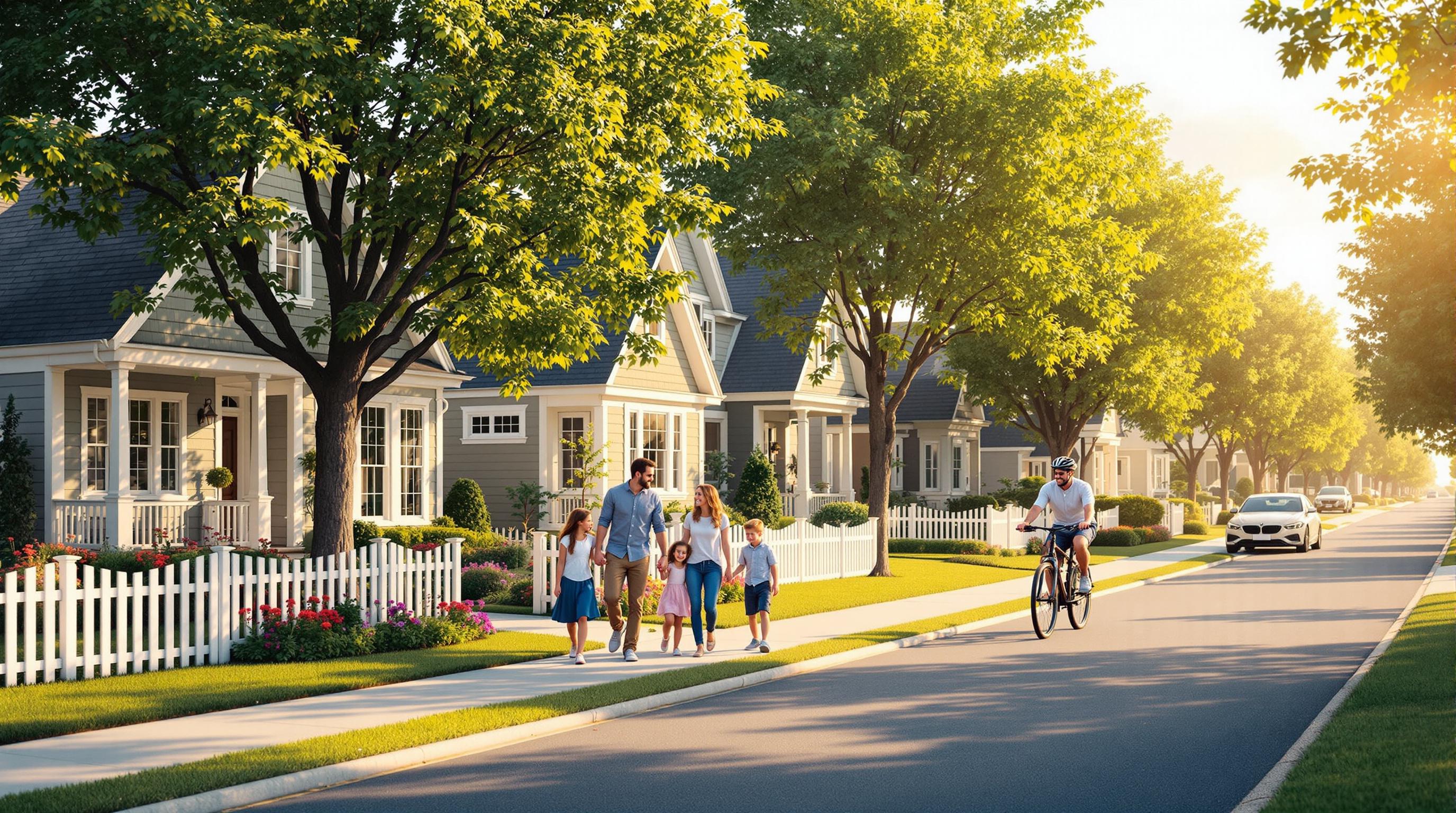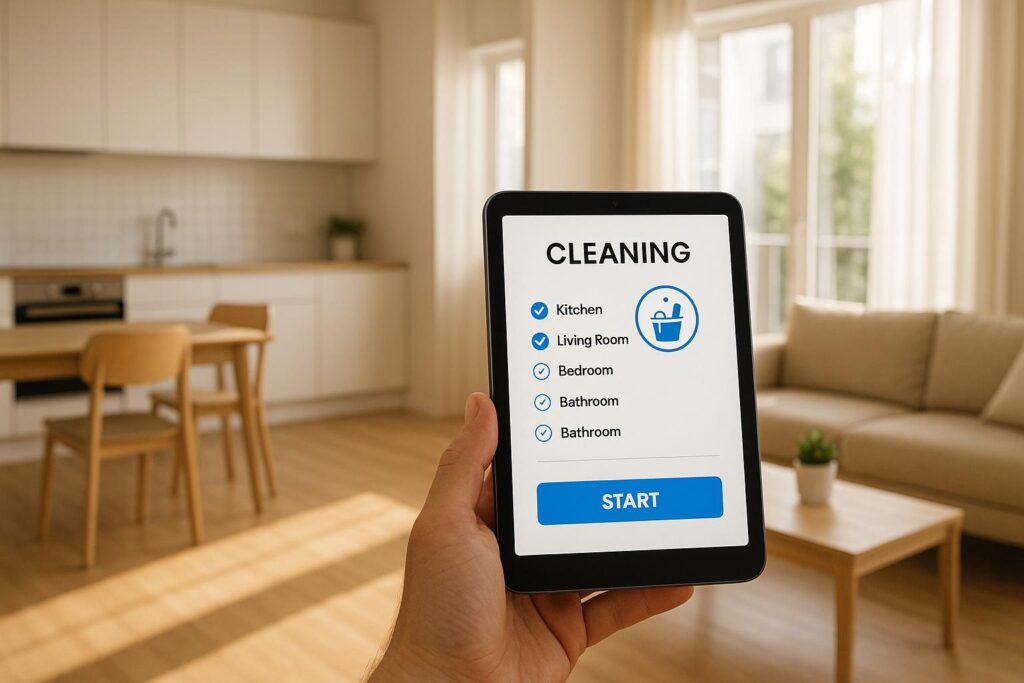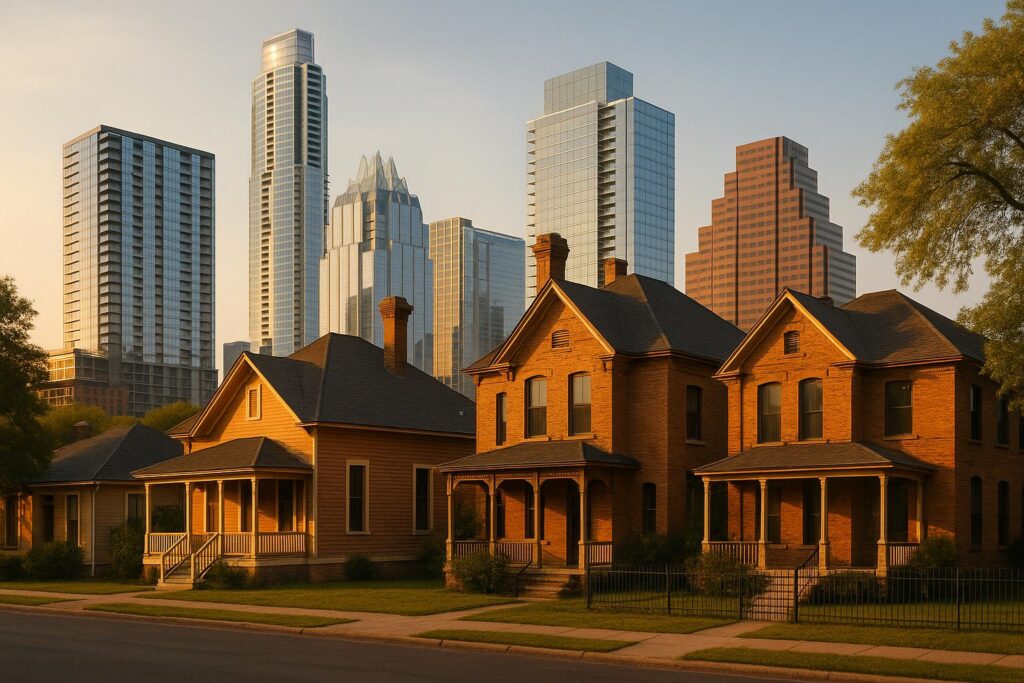When choosing a suburb, your commute is just as important as your home. A shorter, stress-free commute saves time, reduces costs, and improves your daily life. Here’s how to find a commute-friendly suburb:
- Check Transportation Options: Look for safe bike lanes, walking paths, and carpool or ride-sharing programs.
- Measure Travel Times: Use tools like Google Maps to check peak-hour drive times, traffic patterns, and transit options.
- Find Nearby Services: Ensure essential stops like grocery stores, gyms, and pharmacies are close to your route.
- Compare Costs: Balance housing expenses with commuting costs like fuel, transit passes, and parking.
- Test the Commute: Try driving or using transit during rush hours to see real-world conditions.
Drive with me! From Circle C to Downtown Austin TX- Sunday …
1. Check Available Transportation
Take a close look at the transportation options in your area to ensure they meet your commuting needs. This includes assessing bike and walking routes as well as carpool or ride-sharing programs.
Review Bike and Walking Routes
Make sure the area has safe, protected bike lanes and well-marked walking paths. These should ideally connect neighborhoods to workplaces and transit hubs, making your commute smoother and safer.
Explore Carpool Options
Check if there are carpool or ride-sharing programs available. These could be community-based initiatives or employer-supported options that can help reduce both commuting costs and travel time.
2. Measure Travel Times
Check Drive Times Online
Tools like Google Maps and Waze can help you gauge commute times during peak hours. Set your workplace as the destination and check travel times between 7:00 AM and 9:00 AM for the morning rush, and 4:00 PM to 6:30 PM for the evening return. These apps provide traffic patterns and estimated arrival times. You can also save multiple routes to compare them side by side. Some apps even let you set departure times to predict traffic conditions.
Once you’ve gathered this data, take it a step further by examining local traffic trends to get a clearer picture.
Study Traffic Patterns
Knowing typical traffic flows can help you plan your commute more effectively. Keep an eye on:
- School zones: Traffic near schools often spikes between 7:30–8:30 AM.
- Busy intersections: Look for spots where highways merge or bottlenecks are common.
- Construction zones: Check local transportation websites for updates on roadwork.
- Event venues: Large events like concerts or sports games can cause temporary traffic surges.
Use this information to refine your commuting strategy and weigh it against other transportation options.
Compare Transit Options
To find the best commute, evaluate various transportation methods by factoring in total door-to-door travel time. This includes:
- Walking to bus stops or train stations
- Waiting for connections
- Time spent parking your car
- Weather conditions that might affect travel
| Transportation Method | Key Time Considerations |
|---|---|
| Driving | Time to find parking and walk to the office |
| Public Transit | Waiting and transfer times between lines |
| Biking | Time to change clothes and secure your bike |
| Walking | Seasonal weather and sidewalk conditions |
Commute times can shift due to weather, seasons, or local events. Testing different routes and methods during actual rush hours will give you the most reliable sense of what to expect daily.
sbb-itb-4c99469
3. Find Nearby Services
After considering transportation options, it’s time to look into local services that fit into your daily routine.
Map Out Essential Stops
Start by identifying key services that you rely on regularly. Here’s a quick breakdown:
| Service Category | Examples | When You’ll Use Them |
|---|---|---|
| Food & Groceries | Supermarkets, coffee shops, restaurants | Quick morning or evening stops |
| Personal Care | Pharmacies, dry cleaners, banks | Lunchtime errands |
| Fitness | Gyms, yoga studios, running trails | Before or after work |
| Shopping | Convenience stores, hardware stores | On your way home |
Aim for these services to be no more than 5 to 10 minutes out of your way. Use navigation apps to see how these stops fit into your daily commute and adjust as needed to save time and simplify your schedule.
Explore Community Features
Look beyond the basics and consider amenities that enhance your lifestyle and meet broader needs:
- Healthcare: Clinics, dental offices, urgent care, and emergency services.
- Education: Schools (if relevant), libraries, community centers, and educational programs.
- Recreation: Parks, trails, sports facilities, entertainment venues, and cultural hubs.
Keep in mind how seasonal changes might affect access to outdoor spaces, like park closures during bad weather. Stay informed about new developments or upgrades in the area that could add convenience or improve amenities in the future.
4. Compare Costs and Location
Review Housing Expenses
When evaluating housing expenses, consider both direct costs and those tied to commuting. Break your analysis into these key categories:
| Expense Category | What to Include | Impact on Budget |
|---|---|---|
| Housing Basics | Mortgage or rent, property taxes, insurance, HOA fees | Major monthly expenses |
| Commute Costs | Fuel, vehicle maintenance, transit passes, parking fees | Extra monthly costs |
| Utility Expenses | Water, electricity, gas, internet | Recurring monthly bills |
| Location Premium | Price differences compared to similar areas | One-time purchase factors |
For example, a home with a lower purchase price might come with higher commuting expenses. Balancing these costs is critical. After reviewing these expenses, examine local market trends to understand the potential for long-term value.
Check Market Outlook
The long-term growth potential of a suburb plays a big role in safeguarding your investment. Keep an eye on these factors:
-
Market Performance Indicators
Look at historical price trends and current market conditions to gauge steady property value appreciation. -
Infrastructure Development
Projects like new roads, transit expansions, or mixed-use developments can positively affect commute times and property values. -
Community Investment
Local government initiatives and private sector projects often signal enhanced growth and stability in the area.
For more detailed guidance, consider consulting local real estate professionals. For instance, Austin Local Team can connect you with knowledgeable agents who specialize in the Austin market. They can provide advice tailored to your commuting needs and investment priorities.
5. Try the Commute
Once you’ve reviewed maps and static data, it’s time to experience the commute firsthand to confirm your assumptions.
Test During Rush Hour
Commute during peak hours to get a real sense of traffic conditions.
| Time Period | Key Observations |
|---|---|
| Morning Rush (7–9 AM) | Traffic flow and choke points |
| Evening Rush (4–6:30 PM) | Congestion and delays |
Try this over several weekdays to spot patterns. After understanding traffic flow, check how convenient parking is near your destination.
Check Parking Options
Pay attention to how easy it is to find parking and how close it is to your destination. Do this during busy times to get a realistic idea of availability and the walking distance from parking to your workplace or transit stop.
Next Steps
Ready to take the next step after analyzing your commute? Here’s how you can find a home that matches your lifestyle. Once you’ve reviewed suburbs and tested commute routes, it’s time to act. Work with a local expert to align your commute goals with your budget and desired amenities.
Here are some practical steps to guide your home search:
| Action | Purpose | Outcome |
|---|---|---|
| Schedule Consultation | Discuss your commute and housing priorities | Tailored home search strategy |
| Home Search Platform | Explore listings in areas that fit your commute | Instant property notifications |
| Local Agent Match | Partner with neighborhood experts | Insights into the local market |
These steps will help you organize your search and make it more efficient.
If you’re planning a move to Austin, collaborating with experienced professionals can make all the difference. Michael C., who recently relocated, said:
"Austin Local Team was great! Extremely grateful for a real estate agent who was knowledgeable about issues moving from out of state. Good communication and setting expectations with deadlines."
Balancing commute time with housing costs can be tricky, but a local real estate expert can help you weigh your options. They’ll guide you through the process, ensuring you find a home that fits your routine and lifestyle seamlessly.





